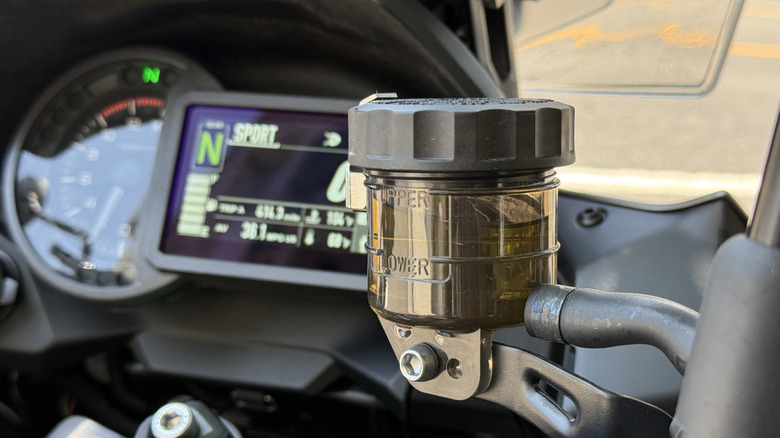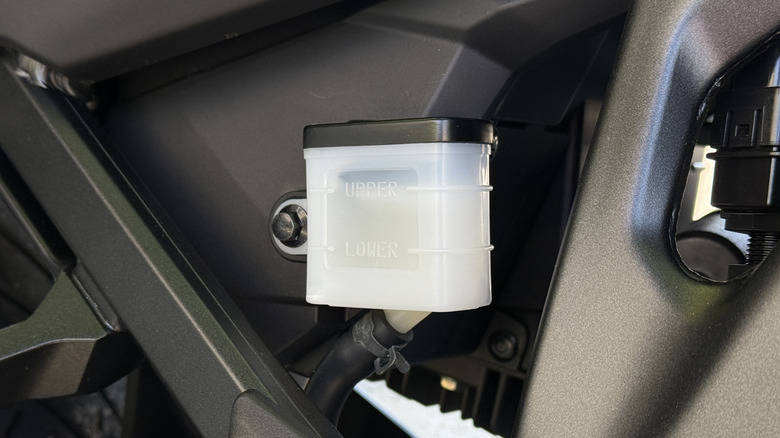What Is The Liquid On Motorcycle Handlebars For?
Whether you've got a passing interest in motorcycles and how they work, or you're starting to think about doing the maintenance on your own bike, there are lots of exposed parts of a bike that can pique curiosity. Nuts, bolts, wires, hoses — they're situated in plain sight on lots of motorcycles, and it's worth asking what they all do. One component you may be curious about is the clear cylinder that sits atop the handlebars, typically on the right-hand side by the throttle and the front brake lever. That's a brake fluid reservoir.
Some reservoirs are fully clear, while others use solid materials with a small window that allows you to check the fluid level. In either case, being able to see the brake fluid's level can indicate to riders whether they need to add more fluid, and potentially even if there's a leak in the brake lines — a situation that demands immediate attention.
Like most modern automobile brakes, motorcycles use pressurized fluid to operate the pistons on their disc brakes. The brake fluid reservoir on the handlebars holds the extra fluid required to create that pressure. Thus, the fluid level will also lower slightly as the bike's brake pads wear down, since the system will push more fluid into the lines to maintain braking performance.
There's more than one brake fluid reservoir
If you're paying particularly close attention when checking out a motorcycle, you'll probably spot a second brake fluid reservoir near the rear wheel — and you'll need to keep an eye on that one, too. Motorcycles typically have separate front and rear brakes, with a pedal for the rear brake and a handlebar lever for engaging the front brake. That means the bike needs two reservoirs for each system. Some motorcycles have linked brakes, but that's less common.
If you're bleeding your motorcycle brakes as part of your regular maintenance schedule, you'll likely need to bleed both systems. Whether you're doing it yourself or having a shop perform the maintenance, brake bleeding should be done about every two years. Doing your own maintenance on a motorcycle can be intimidating at first, but basic tips like checking tire pressure, cleaning the chain, and keeping an eye on your brake fluid reservoir will help ensure your safety on two wheels.

